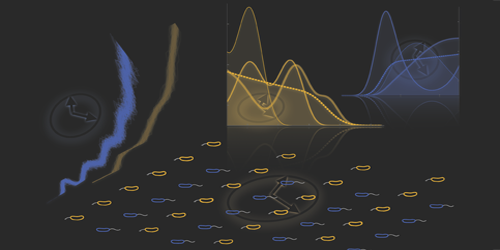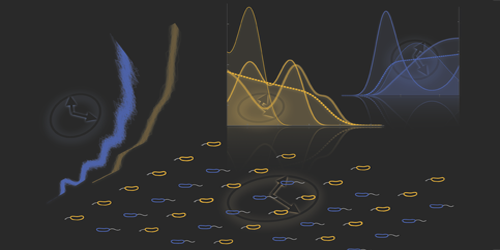Connecting Noisy Single-Cell Dynamics to Smooth Population Growth
When seen individually, living cells are an erratic lot: They divide, grow, and divide some more at random intervals. But when viewed as a population, the size of the ensemble grows in a smooth, predictable, exponential fashion. Microbiologists have known this for a long time, and yet there is no model that captures the dichotomy of this growth behavior. Now, Srividya Iyer-Biswas, of Purdue University in West Lafayette, Indiana, and colleagues have developed and tested a theoretical framework that could allow researchers to learn about the behavior of individual cells by studying the cell population at large.
Starting from first principles, the authors crafted a model for population behavior in which the cells have “memory,” which is needed because a cell’s history affects its aging process. They then derived and solved a set of equations that relate parameters of a whole cell population—like the rate of population growth—to the temporal distribution of the division times of individual cells.
The authors tested their framework using data from previous experiments on Caulobacter crescentus, a species of fresh-water bacteria widely employed in cell studies. Using single-cell measurements as inputs to their model, they computed the cell-age distributions, showing that they accurately matched the distributions observed in the experiments. They also showed that the model could extract, from a simple measurement of the population growth rate, cell-specific information, such as the mean growth rate of individual cells and the distributions of cell ages and of times between cell divisions. The new framework could simplify studies of other systems that exhibit exponential growth, such as tumors and viral infections.
This research is published in Physical Review X.
–Christopher Crockett
Christopher Crockett is a freelance writer based in Montgomery, Alabama.





